
How to build a user persona for your business

A growing business is always concerned with the needs of its users. And creating a user persona, however fictional, provides business teams the information they need to make real decisions considering the needs, experiences, and goals of their users.
Connecting with users requires uncovering information about their attitudes, behaviors, characteristics, and desires using qualitative and quantitative information. To put it simply, to get a 360-degree view of your users, you’ll need to pull together quantitative information to understand scope and scale—as well as intent and preferences—and qualitative stories that breathe life and make the persona feel real.
But before we dive into the practicalities, let’s first make sure we’re on the same page.
What is a user persona?
In 1999, Alan Cooper popularized the concept of personas in his book; The Inmates are Running the Asylum.
Personas are, as he puts it, “... a precise description of our user and what he wishes to accomplish.” Rather than going out and talking to actual users about every little detail, and taking their feedback literally, “...we discover them as a byproduct of the investigation process.” Instead of building for “averages,” we conduct research to understand user archetypes and build a precise and accurate representation of someone who represents the unique combination of needs, expectations, and behaviors that we are targeting.
Since Cooper formalized personas, researchers, developers, designers, and marketers alike have made use of his model to make sure their users have a seat at the table during the design and development process.
Personas have also proven especially crucial as we’ve integrated more inclusive design principles and processes into our work. Personas help extend our view of users to encompass people who represent the full range of human perspectives so we can create services, products, environments, etc. that address those needs. Surfacing these needs pushes us to create products that are more usable for everyone.
Types of user personas
Over time, several different approaches to defining and implementing personas have evolved. Remember, personas are more than just people. They’re fictitious models of a target user’s real behaviors, motivations, attitudes, goals, and more, related to your business’ product or experience.
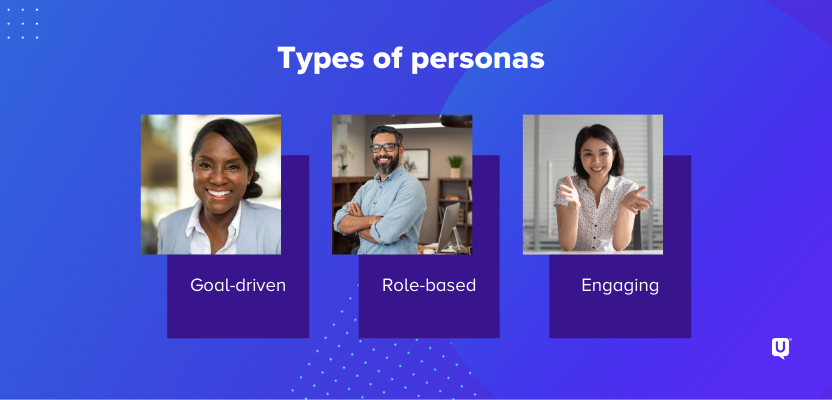
1. Goal-driven user persona
The goal-driven persona is most likely the concept that people are most familiar with. (It’s also based upon the perspectives of Alan Cooper, mentioned earlier.) It gets right to the point and focuses on what the user wants to do with your product or experience. In other words, your business has a product that people use, so the objective of this persona is to examine how a user would go about achieving their objectives while interacting with your product.
2. Role-based user persona
The role-based persona is also behavior-focused, but slightly different. This persona seeks to examine the role(s) that users typically play in real life, their organization, community, and the like. Examining the roles people play in their everyday lives can help inform product and design decisions.
3. Engaging user persona
The engaging persona is different from the others because the idea is to create a 3D rendering of a user through the use of personas. It might sound unusual, but the more people engage with the persona and actually perceive them as real, the more likely they are to consider them during the design process. This persona examines the emotions of the user and uses their psychology to inform decisions for the task at hand.
User persona building for your business
User personas are grounded in research—both qualitative and quantitative. Typically, analytics and surveys support a better understanding of how many and who. This data can be used to build personas of segments that represent many users and provide demographics that help to inform the scope and magnitude of trends and patterns you see in data. For example, one very effective way to leverage quantitative data is through user persona Google analytics.
However, interviews address why and how. The narrative and storytelling facilitated through 1:1 conversation help drive the creation of a precise and accurate portrait of users as well as scenarios that expose contexts of use.
Leveraging interviews for user persona building
To begin, you’ll want to employ open, neutrally-framed questions. Questions that you pose during an interview should be open, enabling participants to answer honestly and without fear of judgment. Avoid asking people “in general” questions that have them characterize what they typically do. People are much more capable of answering specific questions about recent experiences and then characterizing that experience as being normal or not.
In addition, recall questions help to set the stage, get people comfortable, and build rapport. And rapport is important for both moderated and unmoderated settings because you want the interviewee to feel they can be honest and upfront. Here are some examples of how to ask people to talk about recent—within the last 1-3 months—experiences:
- Tell me about the last time you…
- What tools did you use to complete [the task]?
- Where did you start? Why?
- What information did you need to complete [the process]? Did you have it?
- What went well? What did not go well?
Some other lines of questioning you might want to consider include:
- Grand tour: talk about completing a task or goal from start to finish
- Mini-tour: focus on a piece of a larger task
- Example: ask people to tell you the story about a topic you want to hear more about
- Experience: create a narrative that helps you to develop scenarios (or stories) about context of use
- Native language: dig in to expose the words and phrases people naturally use to describe elements of their experience
Now that we’ve laid the groundwork for conducting user interviews to build user personas, it’s important to discuss the different methods for conducting them—moderated and unmoderated. Both approaches are useful to hear customers’ stories, but they differ in some key features. Here are some considerations that might drive your decision-making when electing to use one approach—or both—on the UserTesting platform:
| Consideration | Moderated | Unmoderated |
|---|---|---|
| Real-time probes | X | |
| Minimal moderator bias | X | |
| Highly structured "show and tell" | X | |
| Capture environment | X | X |
| Desktop | X | X |
| Mobile | X | X |
| Live observers | X | |
| Flexible handling of PII/access through firewalls | X | |
| Transcripts | X | X |
| Group note-taking | X | X |
Unmoderated interviews for user persona building
Interviews are essentially guided conversations, and when thinking about how to structure that conversation, there are a few things to keep in mind for unmoderated interviews:
- Time: Typically, every question will take about 1-2 minutes to answer during an unmoderated interview. By contrast, if you probe with follow-ups, a single line of questioning might take up to 5 minutes. When composing your script, you need to how many questions you need answers to and which ones are most important. Here’s how an unmoderated interview might play out:
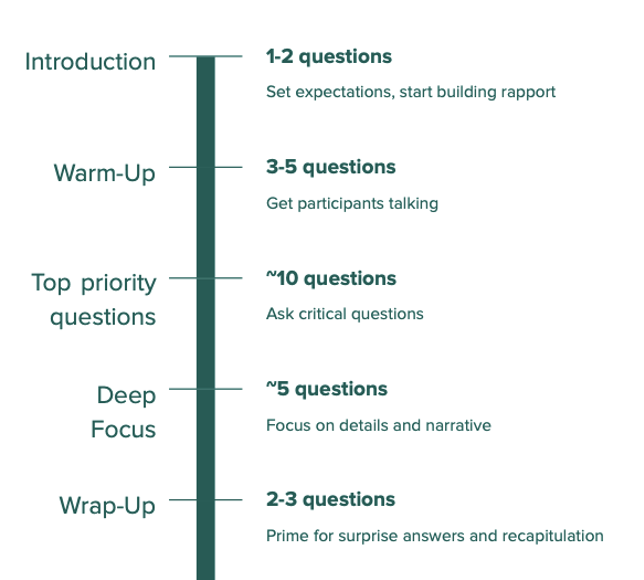
- Flow: Good conversations have a clear beginning, middle, and end. Think about how you want to start talking about a concept, probe to get more details about it, and wrap-up that part of the conversation to transition to another topic. Another consideration is how to structure the line of questioning. Those questions that are most critical should be front-loaded, so they get answered while the user is still deeply engaged. Many participants get fatigued and answer less thoroughly and thoughtfully, the longer they answer questions. When thinking about structuring a moderated interview, ranking questions such as gold, silver, and bronze will effectively manage the flow.
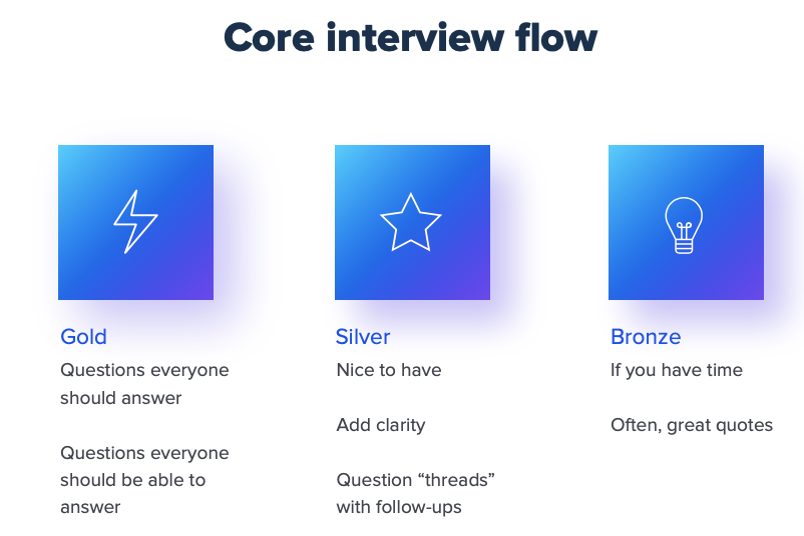
Consider using some creative options to keep your participants engaged, like mixing in tasks where you ask people to show you how they navigate a site, look for information, or their environment. Alternatively, ask them rating scale or multiple choice questions to get a sense of how they feel about a concept. By setting up a more engaging and interactive set of prompts, you will get richer feedback that is more efficient to review.
- Wrap-Up, or revisiting and surprises: Sometimes, after people have been talking for a while and exploring a topic out loud, they come up with a better way of describing what they are thinking and feeling. Carving out time and space to open up and let people go back to revisit topics they might have covered, to bring up ideas that you may not have asked about, or just summarize their thoughts can help you uncover things you may not have expected.
- Tie questions to sections of the persona and/or empathy map: As with any research you do, it is critical to tie specific questions to your report output and create strategies to evaluate the feedback. By creating a clear vision about what data you need to fill out each section of the report, you will also be able to clearly articulate the questions required to elicit the feedback you need.
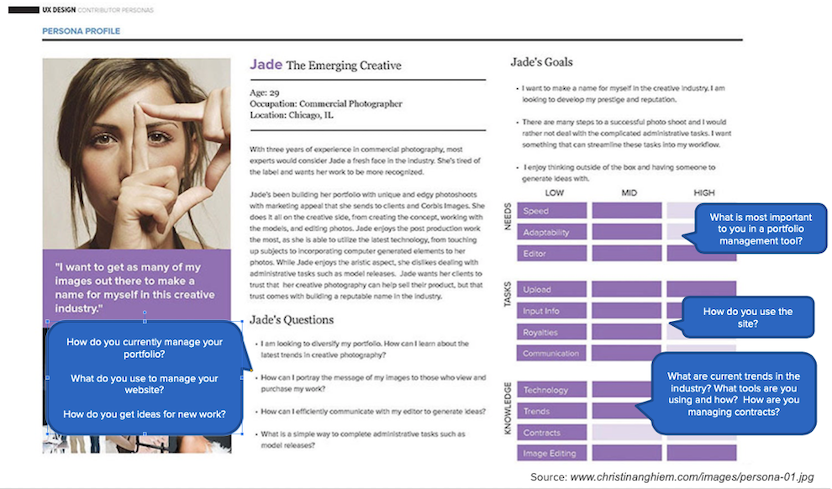
Moderated interviews for user persona building
Moderated interviews can be free-form. Because you can ask people whatever you wish, it is possible to move between show and tell, nuanced discussion, and even have an element of concept testing. While planning for 30- or 60-minute sessions, ensure that you estimate how long you expect each question and response to take. The best way to test this is to pilot test with a colleague. A few other pointers:
- Structured probes: Prepare probes for questions, so you have a plan for how to elicit information when you need to dig deeper. Make sure you have a plan that enables you to address your research objectives and elicit information you didn’t anticipate. Typically, about 7-10 of these more in-depth questions will be possible to cover during a 60-minute session. Write 2-3 follow-up questions so that you know exactly what you want to say to prompt people to give you feedback about a specific topic.
- Observers can have a role: Consider the role of live observers, if you decide to have them, and how best to get your team “in the room.” Often, the most persuasive report is just watching an interview. Hearing feedback directly from participants can go farther than having people read a report. This also means that you can plan to have observers have some input into wrap-up questions or even set up a back-channel means of communicating with the moderator so that they’re able to shift gears or dig deeper into a question during the interview if needed.
Remember that interviews are a time to make a connection with people who represent the users that you want to understand better. The personas—or deliverables—that reflect what you learned from those conversations are meant to be a tangible means of aligning expectations and understanding around what your users truly need. So, the research that you do to support them should also include the stakeholders who will be using them. This is the best way to allay their fears that the deliverable is “made up” and connect them to persona value. Seeing where the data comes from will build trust.
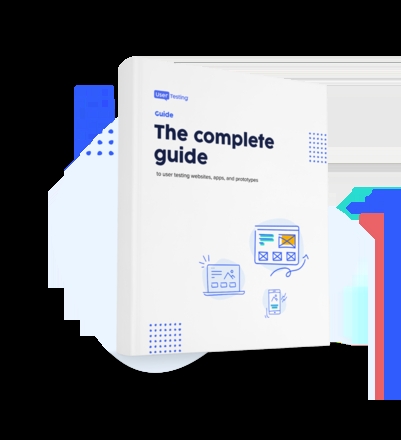
Get started with experience research
Everything you need to know to effectively plan, conduct, and analyze remote experience research.





